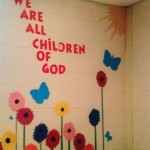Kid Room Decorating Ideas
Decorating a child's room presents a unique opportunity to create a space that fosters creativity, encourages learning, and provides a comfortable sanctuary. This article explores various decorating ideas catering to different ages, interests, and styles, offering practical advice for transforming a child's room into a personalized haven.
Theme-Based Designs: A thematic approach can ignite a child's imagination and provide a cohesive design framework. Popular themes include outer space, under the sea, jungle adventures, or favorite storybook characters. When selecting a theme, consider the child's age and interests to ensure long-term enjoyment. The chosen theme can be reflected in wall decor, bedding, rugs, and accessories.
Color Psychology: Color plays a significant role in influencing mood and behavior. Soft blues and greens are known for their calming effects, while brighter colors like yellow and orange can stimulate creativity and energy. Neutral colors like beige or gray offer a versatile backdrop, allowing flexibility with accent colors and accessories. It's beneficial to involve the child in the color selection process to foster a sense of ownership.
Functional Furniture: Children's rooms often serve multiple purposes – sleeping, playing, and studying. Choosing furniture that maximizes functionality is essential. A bed with built-in storage drawers can help keep clutter at bay. A desk with adjustable height can adapt to the child's growth. Multi-functional furniture pieces can significantly optimize space utilization, especially in smaller rooms.
Creative Storage Solutions: Maintaining an organized space can be challenging in a child's room. Implementing creative storage solutions is crucial. Utilizing wall shelves, storage bins, and organizers can help keep toys, books, and clothes neatly arranged. Open shelving allows children to easily access their belongings while also showcasing favorite items. Incorporating playful storage solutions, like colorful bins or themed containers, can encourage children to participate in tidying up.
Wall Decor and Art: Walls offer a blank canvas for expressing personality and creativity. Wall decals, framed artwork, and even chalkboard paint can transform plain walls into engaging focal points. Consider using removable wallpaper for added flexibility in updating the room's design as the child grows. Displaying the child's artwork creates a sense of pride and accomplishment.
Textiles and Soft Furnishings: Rugs, curtains, and bedding provide opportunities to add texture, color, and warmth to the room. Choosing soft, comfortable materials is paramount. A rug can define different areas within the room, such as a play area or reading nook. Curtains can control light and privacy, while bedding should be chosen for both comfort and aesthetics. Layering different textures can create a cozy and inviting atmosphere.
Lighting Considerations: Adequate lighting is essential for various activities within the room. A combination of ambient, task, and accent lighting is ideal. A ceiling fixture provides overall illumination, while a desk lamp offers focused light for studying. Nightlights can provide comfort and security during the night. Consider incorporating dimmer switches to adjust the lighting levels based on the time of day and activity.
Age-Appropriate Design: A child's room should evolve as they grow and their needs change. A nursery for an infant will have different requirements than a room for a teenager. Consider the child's developmental stage when making design choices. For younger children, safety is paramount, while older children may prioritize personalization and self-expression.
Personalization and Interests: Encouraging a child's participation in the decorating process can foster a sense of ownership and pride. Incorporating their interests, hobbies, and favorite characters into the room's design creates a personalized space that reflects their unique personality. This can be achieved through artwork, posters, or themed accessories.
Budget-Friendly Decorating: Creating a stylish and functional kid's room doesn't require a large budget. Repurposing existing furniture, utilizing DIY projects, and shopping for affordable accessories can significantly reduce costs. A fresh coat of paint, new bedding, and a few strategically chosen accessories can make a significant difference.
Safety First: Childproofing the room is crucial, especially for younger children. Secure furniture to the walls to prevent tipping, cover electrical outlets, and choose window coverings with cordless mechanisms. Regularly inspect the room for potential hazards.
Flexibility and Adaptability: Children's interests and needs change rapidly. Designing a room that can easily adapt to these changes is essential. Choosing neutral wall colors and versatile furniture pieces allows for easy updates and adjustments as the child grows. This approach ensures the room remains functional and enjoyable for years to come.

38 Cool Kids Room Ideas How To Decorate A Child S Bedroom

66 Cool Kids Room Ideas Paint Furniture Storage And More

Kids Room Decorating Ideas For Your Home Designcafe

50 Kids Room Design Ideas Amazing Bedroom By Livspace

Cool Kids Bedroom Design Ideas For Your Home Designcafe

Small Kids Room Design Ideas Ashley

Kids Bedroom Ideas The Latest Design Trends In Block

50 Kids Room Design Ideas Amazing Bedroom By Livspace

14 Hand Picked Ideas For Decorating Kids Bedroom

50 Clever Kids Bedroom Storage Ideas You Won T Want To Miss Small Room Girl Walls Decor







